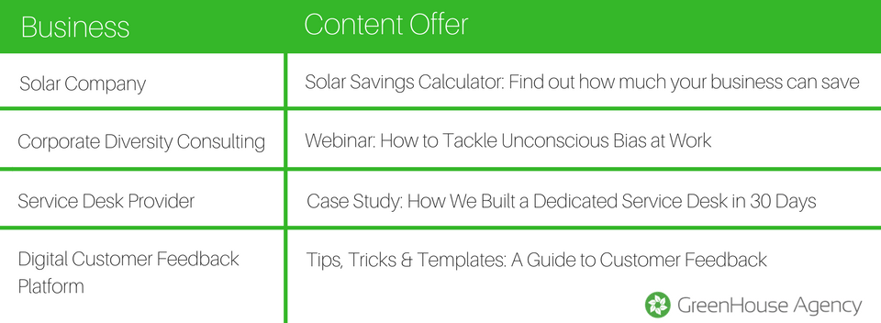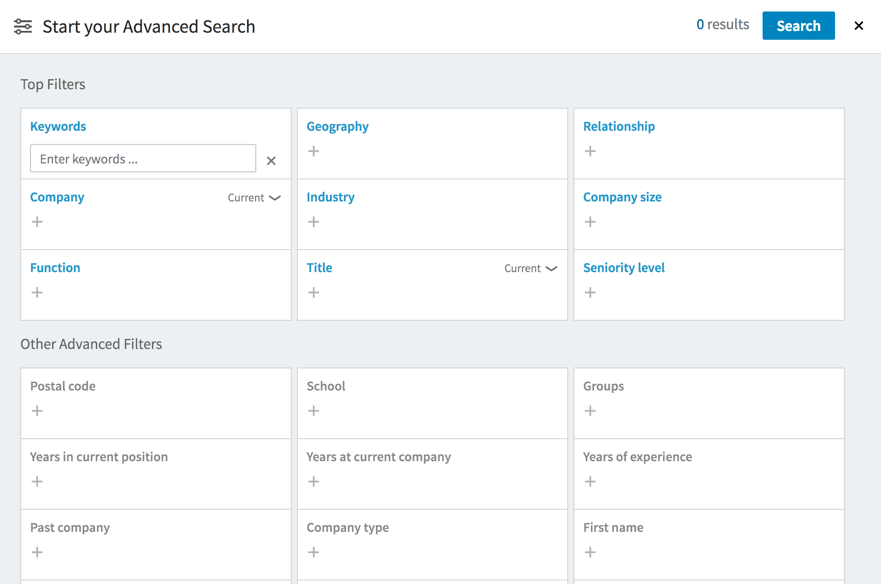So your B2B business is doing well, but it is now time to take it to the next level. While reaching decision makers may seem, well ... out of reach, filling your sales pipeline with qualified leads doesn’t have to be difficult. By applying human-friendly B2B lead generation tactics, you can fill your pipeline with prospects who are ready to speak with a sales person, and more efficiently win new business. We'll explain how in the 3 tactics below.
1) Outline Your Buyer Persona
Sit down and ask yourself, “who is my ideal buyer?” (and keep in mind that “any small business,” is not an answer). Although you may think your buyer personas are simple common sense, when was the last time that you sat down and documented them? Look at your current customers and decide which were the easiest to sell to, and what do they have in common? By documenting these elements, you'll get a clearer picture of your target buyer persona, which in turn will give you all of the rich information you need to find, target, connect with and nurture them. To define and develop your buyer persona, answer these questions:
- Based on previous success, what types of businesses are your best fit? (i.e. restaurants, physical therapy practices, hospitals, etc.)
- How big are the businesses you need to target to reach your goals? (i.e. number of employees, revenue, etc.)
- Whose pain point does your product/service solve? (what person within the company are you helping)
- Who is the decision maker within the business? (i.e. who signs off on it)
2) Premium Content Creation
Now that you have a detailed outline of your buyer persona, you need to consider your approach for establishing a connection with them. With our inboxes flooded with emails daily, and the frequency with which most sales calls are immediately shut down, you need to stand out from the clutter by providing some sort of value to your buyer persona. And luckily, since you've defined them and learned what makes them tick, you should have a clear picture of what they'll find valuable.
One of the best ways to provide value is through the use of premium content offers.
What is Premium Content - Premium content offers are in-depth pieces of content that provide education or some other type of value, for your buyer, in exchange for the individual giving up their contact information. Examples of premium content include webinars, case studies, guides, and video tutorials (to name a few). The key with creating a successful content offer is ensuring that it is specific to your buyers’ pain points and offers great value.
Here are a handful of the successful premium content creation examples that we have completed for our clients:

To start, identify what information or expertise you can provide to relieve the pain points you've identified your buyer personas are attempting to solve. How can you help your buyer persona better do their job? Once you've narrowed down to a topic that specifically reflects their pain point and provides a truly valuable solution, turn it into a premium content offer.
In order to download your content offers or attend your webinars, users must give up key contact information. By gating your offers with a lead capture form, you can start filling your pipeline with qualified leads. You’ll notice that when an individual is interested enough to take advantage of these offers, they’ll often be highly qualified.
Because of the value your offer provides and the "small ask" your prospect needs to fulfill in order to receive the offer, you'll easily establish a connection with them, frame your business as an expert problem solver for their specific problem, and open the door for future conversations.
3) Social Prospecting
Now that you have your content offer created, how do you get it in front of the right people? You may have heard of the term “account-based selling.” This concept involves identifying a list of key accounts that you feel would be a good fit for your company, then connecting with the right prospects in a highly personalized way.
You can perform this tactic by utilizing the buyer persona that you created after answering the questions above. Take that buyer persona data and plug it into LinkedIn Sales Navigator (or another sales prospecting tool). Sales Navigator allows you to input multiple advance search features so you can pinpoint your specific personas. From your search results, you can start building and saving your list of key accounts.

Once you have your list of accounts, you can begin social prospecting. Follow the company across all social platforms (i.e. Twitter, Linkedin, Facebook), and begin to engage with them. It is amazing how responsive some companies are when you approach them via social media rather than directly with email. This allows you to “warm them up,” and makes the potential client familiar with your company, without it feeling like a sales pitch.
Next, send them one of the content offers that you created, along with a personalized message via LinkedIn InMail. Providing them with a content offer will allow you to ease into a conversation with your prospect by helping to establish your credibility as a trusted industry thought leader. If they download, you’ll know they’re ready to move on to the next step of the relationship: connecting with your sales team.
B2B lead generation can seem like a daunting task, but in the end remember that no matter how big the business, you are still talking to a person. They’re trying to do their job and be successful, just like you. If you can help them, and your company, at the same time by providing value and creating relationships rather than diving right into a sales scenario, then everyone wins.
If you have any B2B lead generation tips be sure to share them with us on Twitter @ghagency, and if you want to take your B2B Lead Generation strategy to the next level schedule a free discovery session.
March 21, 2017

